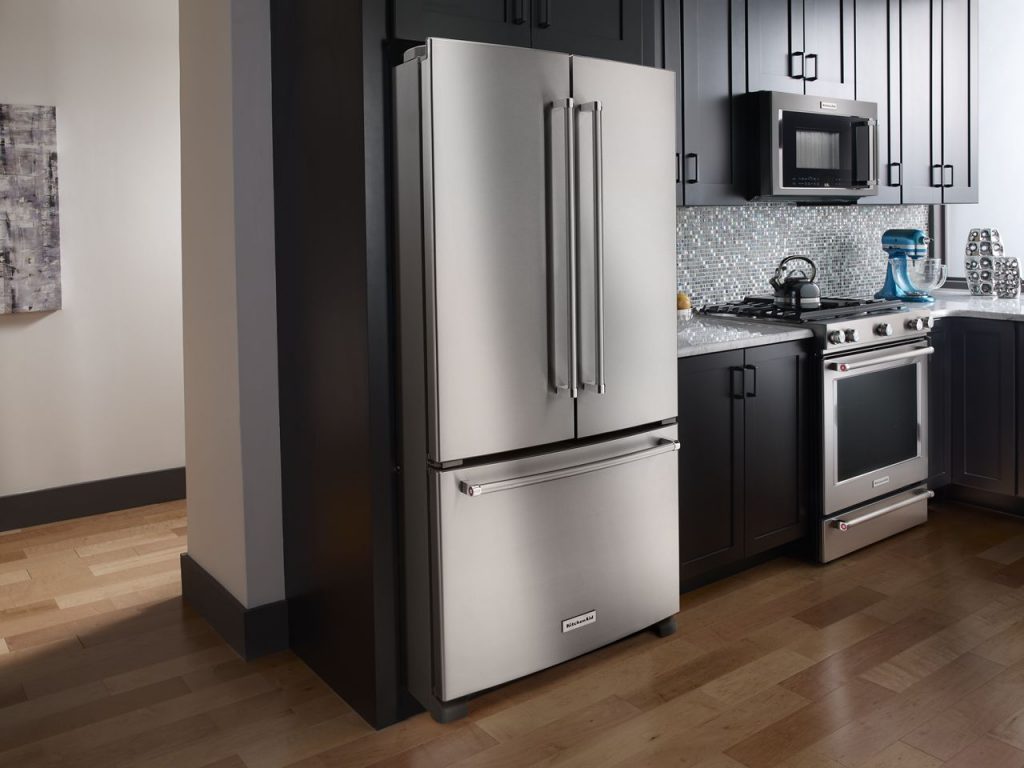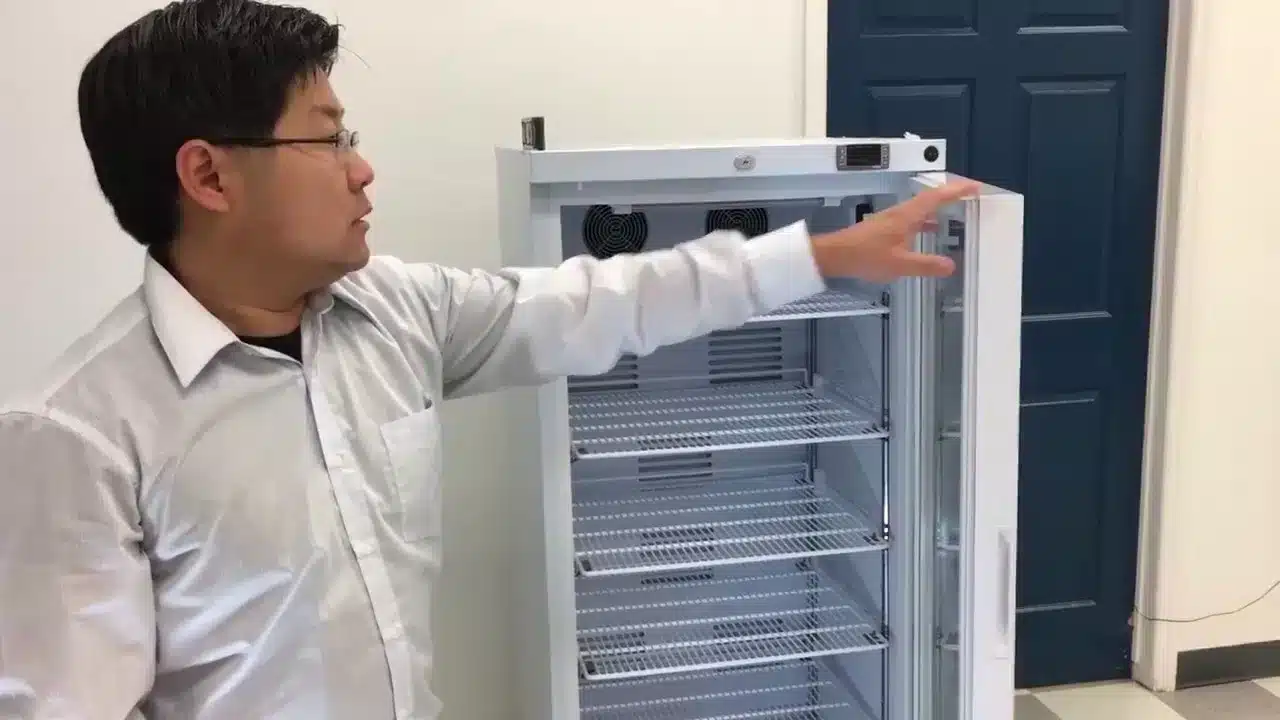If you have ever wondered whether your refrigerator should be level front to back, the answer is no. A refrigerator should be level from left to right, but slightly tilted to the back. This is because a refrigerator needs to have a proper balance and alignment for its doors, hinges, seals, and cooling system to work efficiently and effectively.
In this post, we’ll explain why a refrigerator should be tilted to the back, how to check and adjust the level of your refrigerator, and what problems can arise from an unlevel refrigerator. We’ll also answer some frequently asked questions about leveling a refrigerator.
The best way to level a refrigerator is to use a bubble level or a carpenter’s level to measure the horizontal and vertical alignment of the refrigerator. You can then adjust the height of the front legs or rollers of the refrigerator until it is level from left to right and slightly higher in the front than in the back.
Why Should A Refrigerator Be Tilted To The Back?
A refrigerator should be tilted to the back for several reasons, such as:
- To ensure proper door closure and sealing. A refrigerator that is tilted to the front may cause the doors to swing open or not close tightly, resulting in cold air loss and food spoilage. A refrigerator that is tilted to the back will use gravity to help keep the doors closed and sealed.
- To prevent water leakage and drainage issues. A refrigerator that is tilted to the front may cause water to accumulate in the bottom of the fridge or freezer compartment, or leak out of the door gasket. A refrigerator that is tilted to the back will allow water to flow naturally to the drain pan or tube at the back of the unit.
- To optimize cooling performance and efficiency. A refrigerator that is tilted to the front or sideways may affect the circulation of refrigerant and air inside the unit, leading to uneven cooling or overheating. A refrigerator that is tilted to the back will maintain a consistent temperature and pressure throughout the unit.

How To Check And Adjust The Level Of Your Refrigerator
To check and adjust the level of your refrigerator, you will need the following materials:
- A bubble level or a carpenter’s level
- A screwdriver or a wrench
- A helper (optional)
Here are the steps to check and adjust the level of your refrigerator:
- Unplug your refrigerator from its power source and remove any items on top of it.
- Place the level on top of the refrigerator behind the door. Check if the bubble is centered between the lines. If not, your refrigerator is not level from left to right.
- Remove the grille at the bottom front of the refrigerator. You may need to unscrew it or pull it off with your hands.
- Locate the leveling legs or rollers behind the grille. Each leg or roller will have an adjustment screw or bolt that you can turn with a screwdriver or a wrench.
- Turn the screw or bolt clockwise to raise the front of the refrigerator, or counterclockwise to lower it. You may need a helper to tilt the refrigerator back slightly to access them.
- Check the level again on top of the refrigerator and make adjustments until it is level from left to right.
- Place the level against the side of the refrigerator near the front. Check if the bubble is slightly above or below center. If not, your refrigerator is not tilted properly from front to back.
- Turn both screws or bolts clockwise or counterclockwise until you achieve a slight tilt to the back. The front of your refrigerator should be about 0.25 to 0.5 inches (6 to 13 mm) higher than the back.
- Check both levels again on top and on side of your refrigerator and make adjustments until you are satisfied with their readings.
- Replace the grille at the bottom front of your refrigerator and secure it with screws if needed.
- Plug in your refrigerator and return any items on top of it.

What Problems Can Arise From An Unlevel Refrigerator?
An unlevel refrigerator can cause several problems, such as:
- Poor door closure and sealing, which can lead to cold air loss, food spoilage, frost buildup, mold growth, odor formation, and increased energy consumption.
- Water leakage and drainage issues, which can lead to water damage, corrosion, rusting, electrical hazards, and bacterial contamination.
- Cooling performance and efficiency issues, which can lead to uneven cooling, overheating, compressor failure, refrigerant leakage, noise production, and reduced lifespan.

FAQs About Leveling A Refrigerator
Q: How often do I need to check and adjust the level of my refrigerator?
A: You need to check and adjust the level of your refrigerator whenever you notice any signs of unlevelness, such as door swinging open or not closing tightly, water pooling or leaking, uneven cooling or overheating, or excessive noise. You may also need to check and adjust the level of your refrigerator after moving it to a new location, installing a new floor, or replacing the water filter.
Q: How do I know if my refrigerator is level enough?
A: You can use a bubble level or a carpenter’s level to measure the horizontal and vertical alignment of your refrigerator. Your refrigerator is level enough if it is level from left to right and slightly tilted to the back. The front of your refrigerator should be about 0.25 to 0.5 inches (6 to 13 mm) higher than the back.
Q: What if I can’t adjust the level of my refrigerator?
A: If you can’t adjust the level of your refrigerator, there may be some issues with your floor, your leveling legs or rollers, or your refrigerator itself. You may need to contact a professional technician for assistance.
Conclusion
Leveling a refrigerator is an important task that can help you maintain your refrigerator’s performance and quality. By using a level and adjusting the height of the front legs or rollers of your refrigerator, you can ensure that your refrigerator is level from left to right and slightly tilted to the back. This will prevent door closure and sealing problems, water leakage and drainage issues, and cooling performance and efficiency issues.




